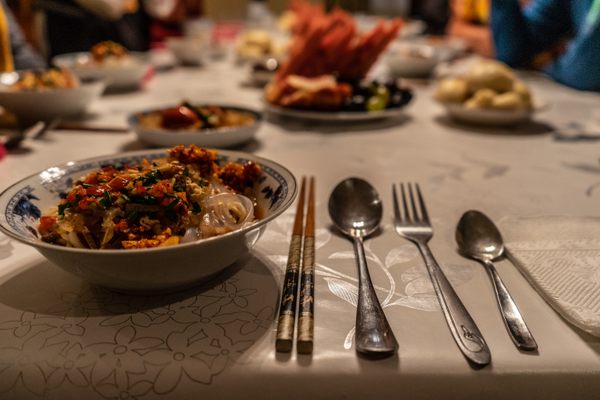AO Edited
Dungan Mosque
Built entirely of interlocking pieces, construction of this Chinese Muslim house of worship required zero nails.
Built by Dungans—Chinese Muslims who fled persecution in the 1800s—this stunning mosque is an architectural wonder that uses no nails whatsoever.
Karakol is a town located on the South-Eastern shore of Issyk-Kul Lake in Kyrgyzstan. Founded in 1869 as a Russian military station, the town grew over time to become the fourth largest city in the country. Karakol soon became a popular year-round destination because of its ski slopes in winter and beautiful lakeshore and hikes available in the summer.
In the 1800s, a group of Chinese Muslims—known as Dungans—fled political unrest in China and arrived at Karakol. The arrival of the Dungans diversified the Karakol community and injected the culture with elements of Chinese tradition and architecture.
In 1904, a Dungan man named Ibrahim Aji commissioned the building of the mosque that was eventually named after the Dungan ethnic group. Ibrahim Aji conscripted Chou Seu, an architect based in Beijing, and twenty master carvers to build a mosque following two principal guidelines: the design had to conform to the Chinese architectural tradition, and it had to be built with no nails.
These requirements resulted in a mosque that exhibits ingenious ways of carving and assembling each component of the building. It took six years to construct the mosque, which is held up by 42 main pillars topped by a three-tiered wooden frame.
The result is a mosque that looks remarkably like a Chinese Buddhist temple, which testifies to the pre-Islamic history of the Dungan community. The color blue prevails, but yellow and red elements also stand out. These colors are highly symbolic in the Dungan tradition. All along the perimeter of Dungan Mosque, the beams are decorated with colorful images of plants and fruit.
Dungan Mosque was spared by Soviet purges, which destroyed the other eight mosques in Karakol, but the building was repurposed as a storehouse between 1929 and 1947. Following the end of WWII, Dungan Mosque was handed back to the Dungan community, which ensured the upkeep of the building to this day. Dungan Mosque is now the only example of Chinese architecture in Karakol and it is a registered historical building protected by Kyrgyz law.
Know Before You Go
The entrance to the mosque on on Bektenova street, a fairly short walk from the center of Karakol.
Women can get robes at the entrance to the mosque, so they can dress casually throughout the rest of the day.
A common and affordable way to travel around Kyrgyzstan is by public transportation, known locally as marshrutkas. Much like a standard bus, marshrutkas have designated routes that pick up and drop off passengers along the way.
Karakol can best be reached from the capital city of Bishkek by either marshrutkas (five to six hours travel time) or by flight. The closest airport is Tamchy (IKU) near Lake Issyk-Kul. Once in Karakol, the Dungan Mosque is a short six-minute walk from the city center on Bektenova str.























Follow us on Twitter to get the latest on the world's hidden wonders.
Like us on Facebook to get the latest on the world's hidden wonders.
Follow us on Twitter Like us on Facebook